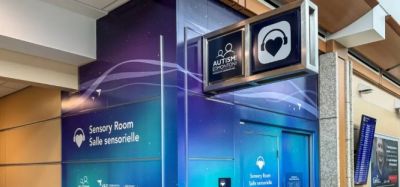Increasing air routes to San Francisco Bay area
- Like
- Digg
- Del
- Tumblr
- VKontakte
- Buffer
- Love This
- Odnoklassniki
- Meneame
- Blogger
- Amazon
- Yahoo Mail
- Gmail
- AOL
- Newsvine
- HackerNews
- Evernote
- MySpace
- Mail.ru
- Viadeo
- Line
- Comments
- Yummly
- SMS
- Viber
- Telegram
- Subscribe
- Skype
- Facebook Messenger
- Kakao
- LiveJournal
- Yammer
- Edgar
- Fintel
- Mix
- Instapaper
- Copy Link
Posted: 24 June 2024 | Craig Simon | No comments yet
International Airport Review caught up with Craig Simon – Interim Director of Aviation at the Port of Oakland – to discuss the airport’s recovery, route development ambitions and their exciting new terminal expansion and modernisation project.


How is business going for San Francisco Bay Oakland International Airport?
Airport business has been struggling since COVID-19. We’re about 89% of where we were prior to COVID-19 in 2019 numbers, but we are seeing some improvements. We’ve added new air services specifically to Mexico with both Volaris and Avianca, so we’re excited that those new services are starting. We are optimistic to see our numbers come back.
One of our biggest struggles has been our California corridor, where we’re not seeing the business traveller come back as fast as we would’ve hoped after COVID-19. As a percentage of our overall passenger mix, business travellers made up about 60%, but this is currently sitting at around 40%, maybe even less. Primarily, the reason for this is due to people working from home more than ever before, with more meetings being conducted via Zoom and folks not being out and about in the way they used to be. We hope for that to change. We have seen an increase in our leisure travel, but we would like to see our business traffic come back. A lot of this is down to the companies themselves, but our main carrier, Southwest, is working very hard with its business partners to really encourage business travellers to come back.
What are your air service development ambitions for the coming years?
Our focus is the new service going to Mexico. But we certainly are looking to start new air services into the Asian markets.
We’d really love to get our service back to Europe; we had Norwegian at the airport for several years. They were very successful – so successful in fact that it brought in British Airways to compete with them at level too. But unfortunately, they’re no longer with us and so we would really like to see that European service come back. The market’s there, clearly. It worked very well for Norwegian for a long time so hopefully we can entice others to start that service again.
How would you characterise your catchment area in a nutshell?
Our catchment area is actually very large, in fact it is the entire San Francisco Bay Area. If you really think about it location-wise, everybody travelling to San Francisco International Airport has to go past San Francisco Bay Oakland International Airport. Our catchment basin is quite a lot larger than San Francisco’s catchment basin and we just need people to understand where Oakland is in relation to San Francisco Bay Area.
What are your challenges in terms of air service development now?
One of our biggest struggles is location. And it’s not about our location, it’s about people understanding where our location is. As I touched on earlier, most people don’t associate Oakland with San Francisco and the San Francisco Bay Area, but we are just as close to downtown San Francisco as San Francisco International Airport (SFO) is. We are considering how to make sure the message is out there, for airlines and passengers, when we do capture new air service, because we will. How do we ensure that those folks coming from other locations, whether it be London or Taipei, know that they can get to San Francisco just as quickly from Oakland as they can from SFO? That’s one of our biggest struggles and we are working hard to address it.
What is the most exciting development happening at your airport that you’re looking forward to in the coming years?
We have a number of exciting developments planned for the years ahead. I think the major one for us is the terminal expansion and modernisation project that’s currently underway. We have a draft environmental impact report out for community input, that will close early in 2024. The National Federal Aviation Administration (FAA) has to do a National Environmental Policy Act (NEPA) process for environmental factors as well.
But really what that is, is a design for a new terminal with 16 new gates net total with a complete modernisation of terminal one and terminal two. We’re trying to increase what we have for our passengers and enhance the passenger experience going through San Francisco Bay Oakland International Airport.
This project will increase the number of passengers processed through the terminal. It’ll take our estimates from where we are currently – about 11 million passengers annually – to upwards of 20 million annually.
What will the passenger experience be like for those experiencing the new terminal?
The thing we will look for most importantly is, one, speed of service. We pride ourselves on providing our passengers the experience of getting in and out of the airport quickly, parked close and on time. It’s about getting on your plane and not getting stuck in security lines, getting tied up in ticketing and not waiting forever to get your bags to get home. Those are the things we’re looking for, and we ask how do we best utilise technology to get us there?
What kind of technology is helping process these passengers quicker?
In the future, I think the technology which will be key in processing passengers more quickly will be artificial intelligence (AI). Perhaps it may be able to check your bags as you park, perhaps some AI will help completely check-in your bags and print luggage tags for you. The machine would put it in, already let it go to the backside of the house to get inspected by the Transport Security Administration (TSA). The potential lies in these sorts of things which will help streamline the passenger experience.
We question what technology can do to help us process passengers faster, as well as shifting resources when needed, ahead of those issues. Utilising technology to know in advance when your travellers are coming so that you can be prepared for best.
What are your opportunities that you foresee for this year that you’re really looking to capitalise on?
Our next opportunity is the new terminal process and really seeing what we can build. One of the things we are currently working on is making sure existing facilities are comfortable and aesthetically pleasing.
We’ve upgraded all the carpet in terminal one and put new seating throughout terminal one. We have a restroom renovation project happening and new ticketing counters coming, again in terminal one. We are constantly looking at and reviewing how we ensure that the passenger experience currently matches what we want it to be for passengers coming through the airport.


Issue
Related topics
Airport development, Passenger experience and seamless travel, Route development, Terminal operations


















